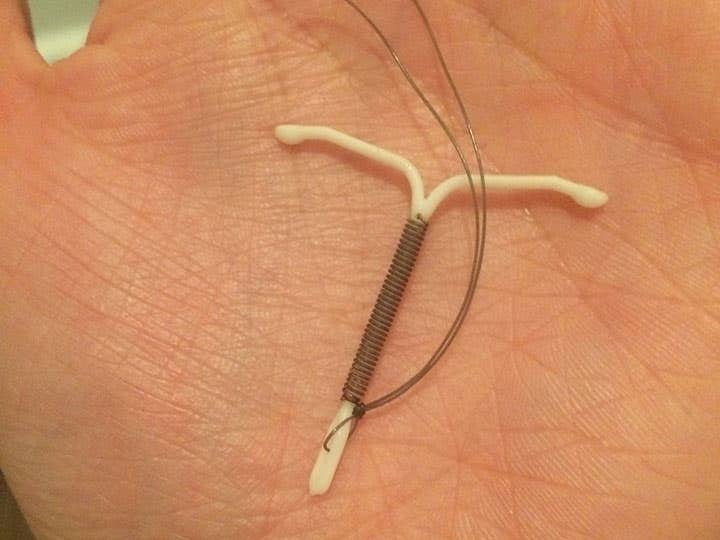Choosing the right postpartum contraceptive method is a crucial decision for women who want to manage their fertility effectively after childbirth. Among various options available, the Copper T Abu Dhabi has gained popularity due to its long-term effectiveness and convenience. This intrauterine device (IUD) offers a reliable method of birth control that can be suitable for women who prefer non-hormonal options. Understanding its benefits, suitability, and overall effectiveness can help new mothers make an informed choice about their postpartum contraceptive needs.
What is Copper T and How Does It Work?
Understanding Copper T as a Contraceptive Device
The Copper T is a small, T-shaped device made of plastic and copper that is inserted into the uterus. Its primary function is to prevent pregnancy without relying on hormones. Once placed, it releases copper ions, which create an environment hostile to sperm, thereby preventing fertilization.
Mechanism of Action
The copper ions interfere with sperm motility and viability, reducing the likelihood of sperm reaching and fertilizing an egg. Additionally, the device induces a local inflammatory response in the uterus, making it inhospitable for sperm and eggs. This mechanism results in highly effective contraception that can last for several years.
Why Consider Copper T in Abu Dhabi as a Postpartum Option?
Non-Hormonal Contraceptive Choice
Many women prefer non-hormonal methods postpartum due to concerns about hormonal side effects or breastfeeding compatibility. The Copper T offers an excellent alternative, especially for women who want to avoid hormonal fluctuations.
Long-Lasting and Reversible
Postpartum women often seek a contraceptive method that is both reliable and reversible. Copper T provides effective protection for up to 10 years, and fertility typically returns quickly after removal, making it a flexible choice.
Compatibility with Breastfeeding
The Copper T is considered safe for women who are breastfeeding, as it does not affect milk production or quality. This makes it an ideal postpartum option for nursing mothers looking for reliable contraception.
The Insertion Process and Postpartum Timing
Timing of Insertion
The timing for Copper T insertion postpartum can vary. Many healthcare providers recommend inserting the device within the first 48 hours after delivery, as the cervix is more open, reducing discomfort and ease of placement. Alternatively, it can be inserted at a later postpartum check-up, depending on individual circumstances and recovery.
Procedure Overview
The insertion process is typically quick and performed under sterile conditions. A healthcare provider may use a speculum to access the uterus and gently place the device. Some women might experience mild cramping or discomfort during and after insertion.
Post-Insertion Care
After insertion, women are usually advised to monitor for any unusual symptoms such as pain, heavy bleeding, or signs of infection. Routine follow-up appointments ensure proper placement and address any concerns.
Benefits of Using Copper T as a Postpartum Contraceptive
Highly Effective Method
Copper T boasts a success rate comparable to other long-term intrauterine devices, making it one of the most reliable postpartum contraceptive options available.
Non-Hormonal and Hormone-Free
For women sensitive to hormones or those who prefer natural methods, Copper T provides an effective solution without hormonal intervention, avoiding associated side effects.
Reversibility and Fertility Preservation
Fertility typically returns soon after removal of the device, which is advantageous for women planning future pregnancies.
No Impact on Lactation
Since it doesn’t interfere with milk production, Copper T is safe for breastfeeding women, ensuring their nutritional needs and breastfeeding routines remain unaffected.
Addressing Common Concerns Postpartum
Safety in the Postpartum Period
Copper T insertion is generally considered safe during the postpartum period, especially when performed by experienced healthcare professionals. Proper timing and technique reduce the risk of complications.
Menstrual Changes
Women might experience changes in their menstrual flow or pattern after insertion, which are usually temporary. The device does not cause hormonal fluctuations, so other hormonal-related side effects are uncommon.
Duration of Use
Copper T can remain effective for up to a decade, offering a long-term contraceptive solution without the need for frequent replacements or adjustments.
Suitability of Copper T for Different Women
Ideal Candidates
Women who have completed childbirth and are seeking a reliable, hormone-free contraceptive method often find Copper T to be suitable. It is also appropriate for women with certain health conditions or those who prefer non-hormonal options.
Not Suitable for All
Women with specific uterine abnormalities, active pelvic infections, or allergies to copper should consult healthcare providers to determine the best contraceptive method for their needs.
Follow-Up and Monitoring After Insertion
Routine Check-Ups
Regular follow-up appointments are essential to confirm the device’s position and ensure no adverse effects are occurring.
Recognizing Potential Issues
Women should be aware of signs such as unusual bleeding, pain, or expulsion of the device, which require prompt medical attention to address potential complications.
FAQs About Copper T in Abu Dhabi
How soon after childbirth can I have the Copper T inserted?
The device can be inserted within 48 hours postpartum, but it can also be placed at a later postpartum check-up based on individual recovery and healthcare provider advice.
Is Copper T safe while breastfeeding?
Yes, Copper T is safe for breastfeeding women as it does not affect milk production or quality, making it a suitable option during the postpartum period.
How long does the Copper T last once inserted?
The Copper T provides effective contraception for up to 10 years, after which it can be removed or replaced as per the woman’s fertility plans.
What should I do if I experience discomfort after insertion?
If you experience severe pain, abnormal bleeding, or signs of infection, contact your healthcare provider promptly for assessment and appropriate management.
Conclusion
The Copper T stands out as an effective, safe, and non-hormonal postpartum contraceptive option for many women. Its long-lasting protection, compatibility with breastfeeding, and reversibility make it an attractive choice for those seeking reliable birth control after childbirth. As always, consulting with a healthcare professional can help determine if Copper T aligns with individual health needs and reproductive plans, ensuring a tailored and informed approach to postpartum contraception.








